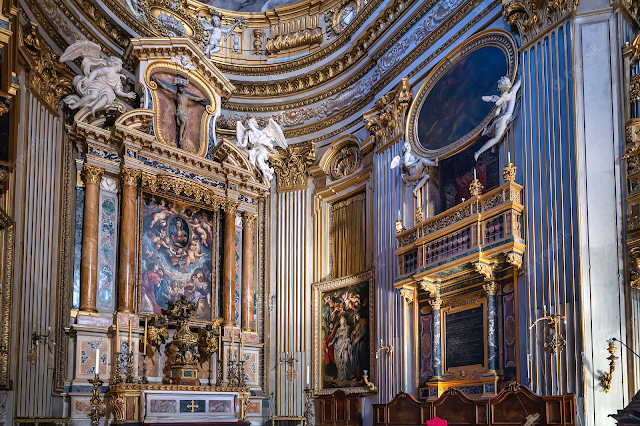An earlier church founded by Gregory the Great was originally on this site. This church would be granted to the Congregation founded by St. Philip Neri in 1575 at which point the rebuilding project for the new church ("chiesa nuova") began, being finally completed in 1605-6. As already mentioned, the Chiesa Noova is a church which exemplifies its period, for it was in this period that we enter into a design that many today would consider synonymous with a "traditional" arrangement -- namely, a central nave leading toward a high altar with the tabernacle situated centrally along with various chapels going down the sides of the church building.
To understand how this was an evolution from what had come previously, one need only think of the classical basilica model with an altar, ciborium, schola cantorum and so on -- as for example can still be seen today in the basilica of San Clemente.
 |
| The medieval Roman basilica |
 |
| Ruben's altarpiece |
 |
| Detail of the high altar reredos |
Pietra da Cortona was also the artist responsible for the apse fresco which depicts the Assumption of the Blessed Virgin Mary.






.jpg)















